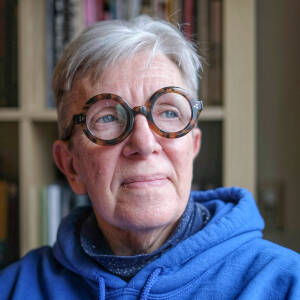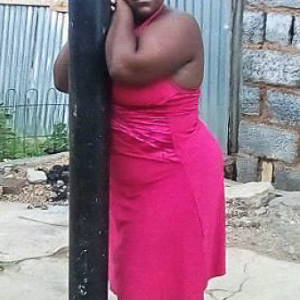Palesa Claims Me
On the day of JoAnn Hardesty’s swearing in, I began to have cold symptoms, and they escalated, turned into a sinus infection, and have not yet left me, so instead of writing for the past ten days, I have been languishing on my fainting couch, having the vapors while my camera has been en route to New Jersey for repairs.
Finally this morning at 4 a.m. I woke with my head a little less foggy and began to write. Here is episode one of the story of Palesa in my life. I am happy to say she and I are still connected, and thanks to a Blip friend in South Africa who received funds and transferred them to Palesa over a four-year period, I was able to send her to school. She trained as a care-giver to people with medical and geriatric issues, and she now has a permanent job in a nursing home in Johannesburg. Her current Facebook portrait is my Extra. Here’s the latest episode of the Lesotho story, begun here and last updated here. You can read them all (should you ever wish to) by clicking on the Tag #Kendall_ProbablyNeverFinished.
On a Saturday morning less than a month after my arrival, I climbed a steep, rocky footpath among pink clouds of blossoming peach trees and bands of ragged children. On the way: mud-and-wattle thatched houses, cinderblock rectangles with corrugated roofs, lean-tos of scrap metal and plastic sheeting, each with laundry draped over bushes and fence-posts, each with a peach tree. M’e Mpho asked me to come photograph her grandchildren, and I was eager for the assignment. My Pentax was loaded with 36 frames of Kodachrome 64 film.
I gasped for breath in the mile-high altitude, my sneakered feet slipped on sand and gravel, and I was soon surrounded by children practicing their English and begging skills.
“Good morning, teacher.”
“Give me money.”
“Please! Please!”
“Give me sweets.”
“I am hungry.”
There are dinosaur footprints on the the mountaintop beyond the village, and at odd times South African whites will show up to photograph the footprints and each other. Their custom is to travel with pockets full of small change and hard candies to throw at groups of children like bread crumbs for ducks. Conditioned to expect this from white people, the children ran, danced, and fell over each other, giggling and shrieking around me. Some were thin and muscular, some had snotty noses, some had bellies swollen with parasites and malnutrition, but all were delighted to toy with a stranger, even one with no coins or sweets to toss at them.
“Just follow the path and you will come to my house,” M’e Mpho told me on Friday afternoon. “It’s right there,” she said, pointing at a hillside dotted with a couple of hundred dwellings. “No trouble to find it. I will send a child to meet you.” After I climbed upward among circling children for about an hour, a tall, thin girl emerged from the pack, looked at me with sparkling, mischievous eyes and said loudly, barely containing her giggles, “M’e Mpho.” She pointed, and yes, there was M’e Mpho, another forty feet above me, waving and smiling. M’e Mpho’s house was slabs of buttery-colored sandstone quarried nearby and held together with crumbling mortar, chinks filled with small stones. The wooden door and window frames, sun-bleached and weathered, were pink, and a tortoiseshell kitten darted away when my noisy procession approached.
“Please,” M’e Mpho gestured toward a boulder in the shade of her house, “sit down. My children are almost ready.” She extended her right hand with a can of warm Diet Coke obviously bought in my honor, her left hand supporting the right elbow, a gesture of respect and generosity. I collapsed on the rock, took the Coke with both hands and a bow (no one else was drinking), and gazed down the hillside toward the University, which was not as far as it had seemed. A symphony rose toward us: roosters, chickens, dogs barking, a hammer pounding, a minibus taxi blasting its horn, the melodious clank of cowbells and tinkle of goatbells, and voices, voices, voices.
While the children who had followed me milled around M’e Mpho’s house, she lined up her grandchildren, all in their best clothes, meticulously clean and neatly ironed. She explained that two belonged to her son the miner and were visiting for the weekend. “I only see these grandchildren two, maybe three times a year, my dear. So I want a photo.” One barefoot child in a ragged red dress lined up with them, and M’e Mpho shooed her away. She came back. M’e Mpho pushed her aside with a rapid volley of Sesotho words, and she started to cry.
“What’s wrong, M’e Mpho? Why are you pushing that one away?” I asked.
“She is trouble, that one, but not my trouble, not mine. You don’t want to know. Her mother lives up there,” M’e Mpho nodded toward the mountaintop, “and she is sleeping with many men. She turns her child out in the night to sleep anywhere, anywhere she can find. Last night she slept by my door. But if I let her in, she wants to stay. She’s like a wild animal, that one.”
The child, aware she was being talked about in a language she could not understand, came over and threw herself on me.
“What did I tell you? Trouble!” M’e Mpho said to me, and then a stream of fierce Sesotho and gesticulations at the child, who grabbed onto my shirt with both hands, looked me in the face, and beamed an enormous smile before nestling her head against my heart and folding her legs up in my lap. “You see? She will follow you now, like a cat! You are never going to be rid of her. Futsak! ”
I held Palesa, charmed, almost hypnotized by the power of her Will, her strong grip, her massive smile, her indomitable joy, and the force of her need. She spoke to me and I heard.
Eventually M’e Mpho convinced Palesa to go sit by the house, away from the chosen children. I was instructed to leave her out of the photographs, but I angled this photo so that it included her, and I kept this one for myself.
------------
*Thanks to Peg for lending me a NikonCoolPix P500 to use in emergencies (for todays photo) until my Fuji comes back to me.


Comments New comments are not currently accepted on this journal.